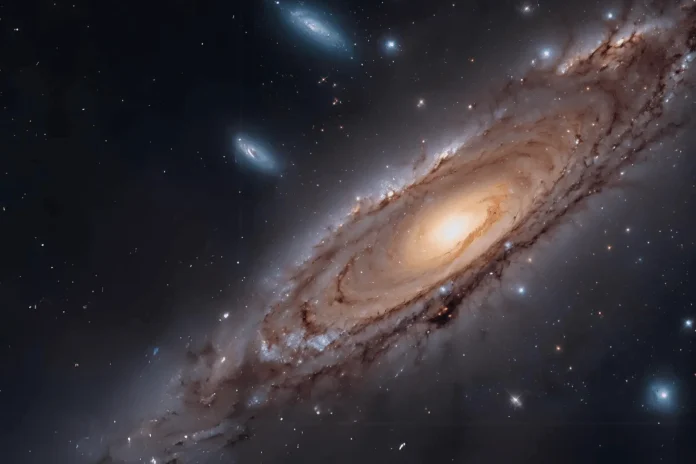In the vast blanket of space, where the colours of the universe paint a mesmerizing portrait, NGC 4654 – an intermediate spiral galaxy – stands as a gripping masterpiece. Captured by the Hubble Space Telescope, this spiral galaxy, residing 55 million light-years away from Earth, is a celestial display that sparks the imagination.
Cosmic Collision and Star Formation Tale
The Hubble Space Telescope captured visible, ultraviolet and infrared wavelengths of NGC 4654. With fluorescent blues and rich espresso-brown color, the NGC shows a story that spans over half a billion years. According to the observed images, scientists believe that over 500 million years ago, NGC 4654 smashed with another galaxy known as 4639. Thus, due to gravitational pull, it stripped NGC of some gases along with its edge. This pull limited star formation at NGC 4654’s edge because all that interstellar gas contains the parts required to make new generations of stars in the first place.
NASA states that studying mysterious galaxies like these and understanding how stars are formed is crucial for many reasons– it helps us learn how planets are born around stars and how Earth came together around the sun.
NGC 4654’s Galactic Tug-of-War
As per the announcement by NASA, NGC 4654 exhibits an uneven arrangement of stars and neutral hydrogen gas. This irregularity might stem from an occurrence where the Virgo cluster exerts a force on the galaxy while crossing the region referred to as the intracluster medium. This medium comprises highly heated plasma, primarily hydrogen and charged particles.
Cosmic Tapestry
The intriguing story of NGC 4654, its gravitational dance with galaxy 4639 and the limitation imposed on its star formation due to cosmic theft of gases unveils the secrets of our universe’s creative forces. The mesmerizing celestial display of NGC reminds us of the boundless wonders that await our exploration of the ever-expanding canvas of the cosmos.



